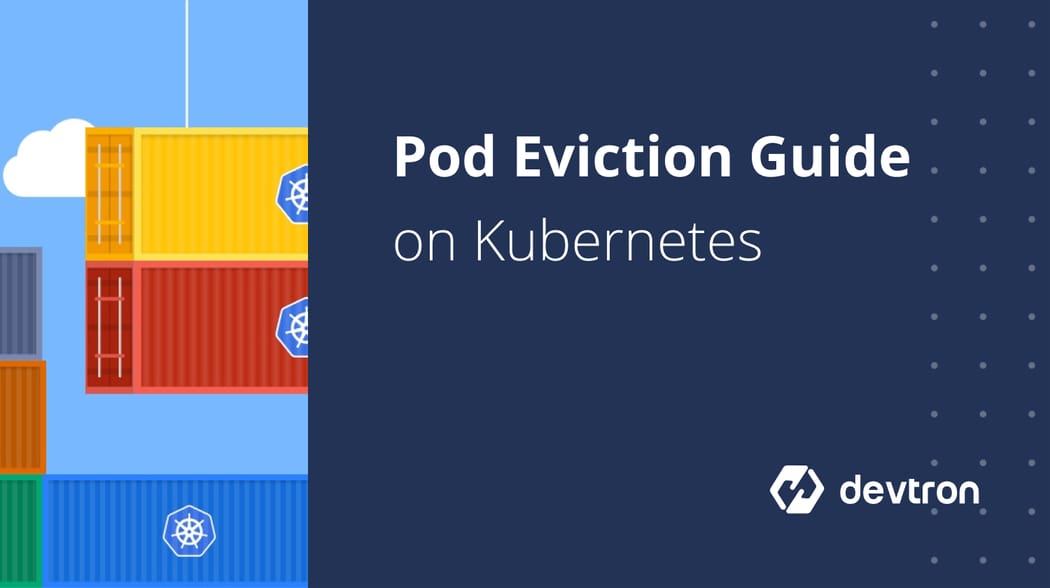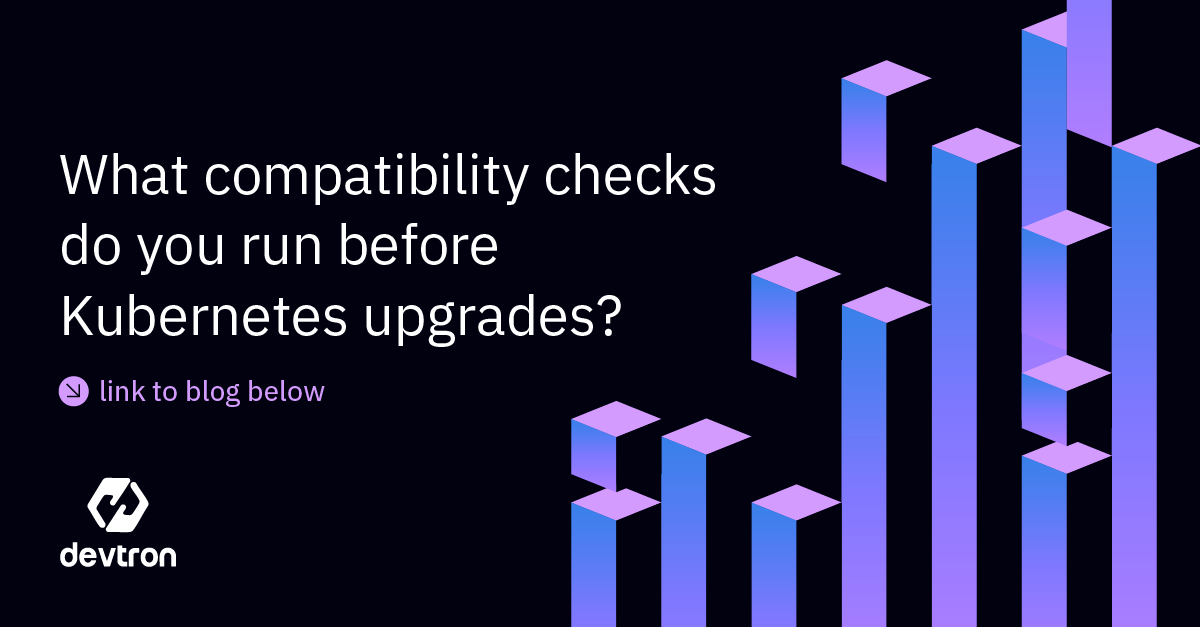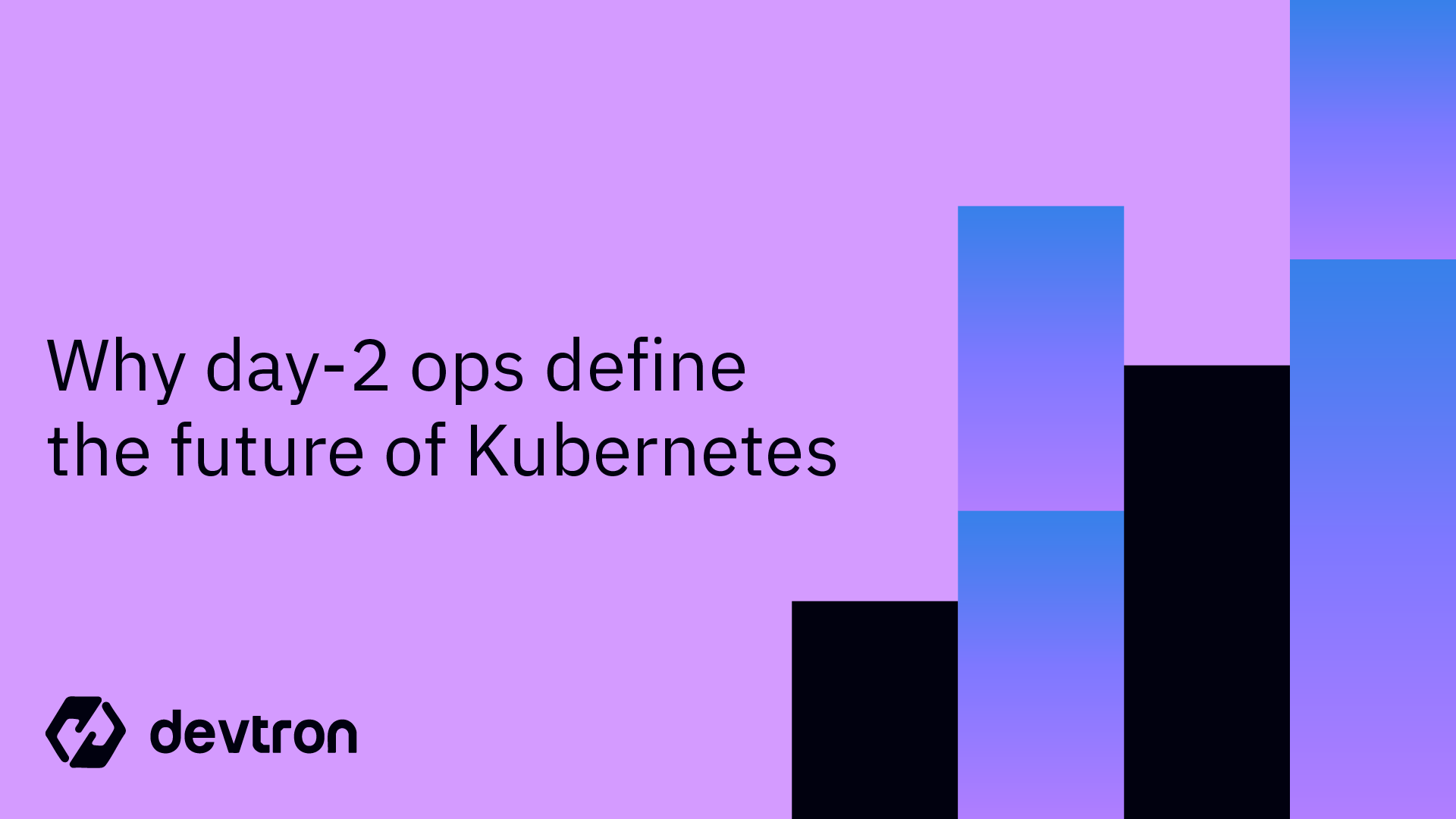1. Learn what Kubernetes Pod Eviction is and why pods are removed from nodes due to resource pressure or preemption.
2. Understand the two main eviction scenarios—Pod Preemption and Out-of-Resource Eviction—and how they affect cluster stability.
3. Explore how Quality of Service (QoS) and Pod Priority influence which pods are most likely to be evicted.
4. Discover how to prevent unnecessary pod evictions using resource requests/limits, PriorityClasses, and PodDisruptionBudgets.
What is Kubernetes Pod Eviction?
Kubernetes Pod Eviction occurs when the scheduler or kubelet removes a pod from a node because:
- The cluster runs out of critical resources (CPU, memory, storage)
- A higher-priority pod needs the node, and lower-priority pods must be removed
Pod eviction ensures cluster stability, but frequent evictions can impact application uptime.
Quality of Service
There is no direct method to specify the Quality of Service (QoS) of pods. Kubernetes determines the quality of service based on the resource requests and limits of the pods.
Each container specifies a request for resource, which is the amount of resource that is guaranteed by Kubernetes, and a limit for resource, which is the maximum amount of resource Kubernetes will allow the container to use.
Pod-level requests and limits are computed by adding per-resource level requests and limits across all containers of the pod. Kubernetes currently provides three QoS based on pod-level request and limit
- Guaranteed
- Every container in a pod has a CPU request and limit, with request == limit
- Every container in a pod has a memory request and limit, with request == limit
apiVersion: v1
kind: Pod
metadata:
name: guaranteed-nginx
namespace: demo
spec:
containers:
name: guaranteed-nginx
image: nginx
resources:
limits:
memory: "512Mi"
cpu: "1024m"
requests:
memory: "512Mi"
cpu: "1024m"- Burstable
- At least one container has a memory and CPU request
- Pod should not meet the criteria of Guaranteed as mentioned above
apiVersion: v1
kind: Pod
metadata:
name: guaranteed-nginx
namespace: demo
spec:
containers:
name: guaranteed-nginx
image: nginx
resources:
limits:
memory: "1024Mi"
requests:
memory: "512Mi"- Best Effort
- None of the containers has any memory or CPU request, or limit
apiVersion: v1
kind: Pod
metadata:
name: guaranteed-nginx
namespace: demo
spec:
containers:
- name: guaranteed-nginx
image: nginxPod Priority
Kubernetes exposes two specs, priority and priorityClassName, to define the priority of pods. This is used along with spec preemptionPolicy, which can have value Never or PreemptLowerPriority.
Pod with higher priority is placed ahead in the scheduling, if preemptionPolicy is set to PreemptLowerPriority and no node is found that satisfies the requirements of the pod, then scheduler will evict lower priority pods to create space for it.
PriorityClass config with preemption disabled
apiVersion: scheduling.k8s.io/v1
kind: PriorityClass
metadata:
name: high-priority
preemptionPolicy: Never
value: 1000000
globalDefault: false
description: "This priority class will not preempt other pods."Pod with priority class
apiVersion: v1
kind: Pod
metadata:
name: nginx
labels:
env: demo
spec:
containers:
- name: nginx
image: nginx
imagePullPolicy: IfNotPresent
priorityClassName: high-priorityHow do quality of service (QoS) and pod priority relate to the stability of pods?
Let’s analyze the role of Quality of Service and Pod Priority with respect to the stability of pods for preemption and eviction.
Pod preemption
When pods are created, they are placed into the scheduling queue based on their priority. Scheduler picks up a pod for scheduling and filters nodes based on the requirements specified by the pod. If the scheduler is unable to find any suitable node for the pod, then preemption logic is invoked for the pending pod, provided preemptionPolicy for the pending pod is not set to Never.
Preemption logic tries to find nodes that have lower priority pods than the pending pod so that the pending pod can be scheduled on this node after the removal of low-priority pods.
Quality of Service doesn’t have any impact on pod preemption; it is affected by the pod priority and preemption policy.
Limitations of pod preemption
Setting up priority for the first time on the existing cluster
When you are setting up pod priority for the first time, you must start with the pods with the highest priority or keep preemptionPolicy as Never. Because the default priority of the pod is 0, if you set priority for low low-priority pod first, then it may preempt a critical pod, which may not have priority set and may result in an outage.
Grafana faced ~30-minute outage as blogged here, which was attributed to applying pod priority in the wrong order.
PodDisruptionBudget (PDB) is not guaranteed
PDB is only on a best effort basis. It will try to find a node such that eviction of lower priority pods will not result in violation of PDB. But if it is unable to find any such node, then it will evict low priority pods from the node to schedule high priority po,d even if eviction results in violation of PDB and may result in outage.
So, what purpose is served by PodDisruptionBudget?
PodDisruptionBudget comes into play in case of voluntary disruption, for eg, node drain or downscale during cluster autoscaling. PodDisruption budget limits the number of pods of an application that can be down simultaneously, thereby ensuring quality of service is not impacted.
Affinity with low-priority pod
In case a high-priority pod (H) has inter-pod affinity with a lower-priority pod (L), it is possible that the scheduler may end up evicting L from the node in order to make space for H. If it happens, then inter-pod affinity will no longer be satisfied, and H will not be scheduled on this node. This loop can continue and can have a negative impact on the availability of services.
You can avoid it by ensuring that the pod with preemptionPolicy PreemptLowerPriority has inter-pod affinity with a pod of equal or higher priority.
Preemption may not follow a strict priority order
Scheduler finds nodes with lower priority pods so it can run pending pods after eviction of lower priority pods. If it’s not feasible to run the pending pod on the node with low priority pods, then it may select a node with a higher priority pod(priority of these pods may be higher than the pod on other nodes but will be lower compared to pending pods).
To run a pending pod, the scheduler attempts to select nodes with the lowest priority pods, but if it’s not possible to run the pending pod on the node after eviction or those pods are protected by a pod disruption budget, then it will evict higher priority pods.
Best practices for pod preemption
- Always use PodClassPriority and not priority directly
- Don’t create too many levels of priorities
- Have preemptPolicy PreemptLowerPriority only for critical services and use system-cluster-critical or system-node-critical as priorityClassName
Out of resource eviction
In over-committed nodes, pods will be killed if the system runs out of resources. Kubelet proactively monitors compute resources for eviction. It supports eviction decisions based on incompressible resources, namely,
- memory.available
- nodefs.available
- nodefs.inodesFree
- imagefs.available
- imagefs.inodesFree
Eviction doesn’t happen if pressure is on compressible resources for e.g. CPU.
Kubernetes allows us to define two thresholds to control the eviction policy of the pods.
Soft eviction threshold
If a soft eviction threshold is reached, then pods are evicted with a grace period. The grace period is calculated as the minimum of the pod termination grace period and soft eviction grace period. If a soft eviction grace period is not specified, then pods are killed immediately.
Hard eviction threshold
If a hard eviction threshold is reached, then pods are evicted immediately without any grace period.
Eviction policy
In the case of imagefs or nodefs pressure, it sorts pods based on the local volumes + logs + writable layers of all containers.
In case of memory pressure, pods are sorted first based on whether their memory usage exceeds their request or not, then by pod priority, and then by consumption of memory relative to memory requests. Pods that don’t exceed memory requests are not evicted. A lower priority pod that doesn’t exceed the memory request will not be evicted. In contrast, a higher-priority pod that exceeds memory requests will be evicted.
Quick Summary: Kubernetes Pod Eviction Types
| Eviction Type | Trigger | Controlled By |
|---|---|---|
| Pod Preemption | High-priority pod needs node | priorityClassName, preemptionPolicy |
| Out-of-Resource | Node runs out of memory/storage | QoS & Eviction Thresholds |
| Node OOM Kill | Node memory exhausted | Linux oom_killer & QoS |
Best practices for out-of-resource eviction
- Always define memory requests and limits for pods
- Use Guaranteed QoS for critical pods
- Keep non-critical pods 80–90% resource allocated for cost efficiency
- Configure PodDisruptionBudgets (PDBs) for voluntary disruptions
- Use PriorityClasses wisely to prevent unnecessary preemption
- Monitor node resource usage and eviction events
Node Out of Memory (OOM) kill
In case a node experiences OOM behaviour prior to Kubelet being able to reclaim memory, the node depends on oom_killer to respond.
oom_killer calculates oom_score such that containers with the lowest quality of service that consume the largest amount of memory relative to memory request should be killed first.
Kubelet may restart OOM-killed pods depending on the restart policy, unlike eviction.
Preventing Pod Eviction Challenges with Devtron
One of the biggest pain points with Kubernetes Pod Eviction is that it often happens unexpectedly, causing service disruptions if resource requests, limits, or priorities are not configured properly.
Devtron helps solve this by:
- Providing real-time visibility into pod health and resource usage.
- Making it easy to configure CPU and memory requests/limits for each workload.
- Automating best practices like using PriorityClasses and monitoring eviction events.
Devtron can proactively prevent unnecessary pod evictions, reduce downtime, and simplify Kubernetes management without manually tracking every resource configuration.
FAQ
What is Pod Preemption in Kubernetes and How Does It Affect Pod Stability?
Pod preemption occurs when a higher-priority pod evicts lower-priority pods to be scheduled. This ensures critical pods are prioritized, but improper configuration can lead to disruptions. Managing pod priorities and preemption policies helps avoid service interruptions.
How Does Kubernetes Handle Pod Eviction Due to Resource Pressure?
Kubernetes evicts pods when a node runs low on resources like memory or disk space. It uses soft or hard eviction policies based on thresholds. To minimize disruptions, set resource requests and limits, particularly for critical pods.
What Are the Quality of Service (QoS) Classes in Kubernetes and How Do They Impact Pod Stability?
Kubernetes has three QoS classes: Guaranteed, Burstable, and Best Effort. Guaranteed pods are the most stable, while Burstable and Best Effort are more prone to eviction. Properly configuring resource requests and limits ensures stability and avoids eviction during resource shortages.
How Can Pod Priority Help Prevent Disruption During Kubernetes Pod Scheduling?
Pod priority ensures that higher-priority pods are scheduled first, and lower-priority pods are evicted when resources are tight. Setting appropriate priorities and preemption policies prevents disruptions and ensures critical services remain running.







